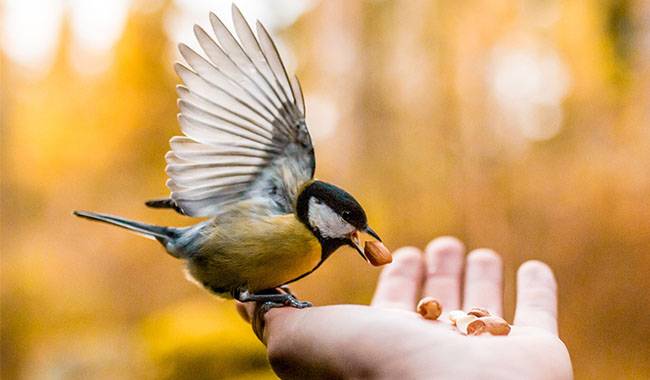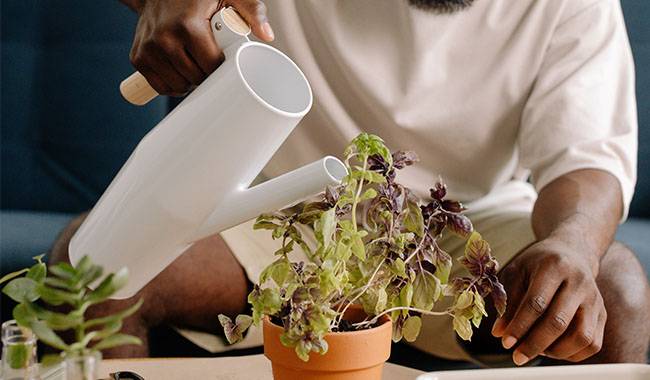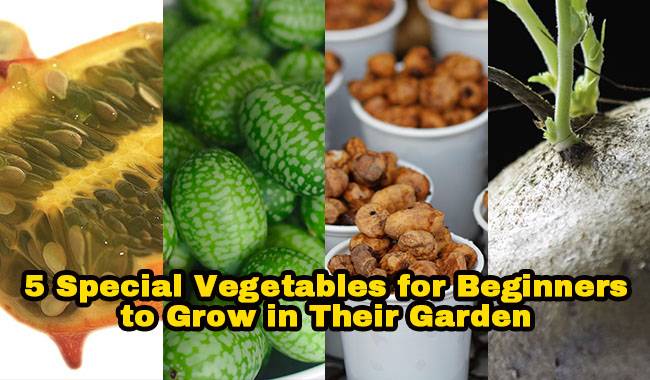
Summer residents grow cucumbers, tomatoes, cabbage, carrots, and beets every year: their harvest is a good help to the family budget. But sometimes you want something unusual that will make your neighbors die of envy. And make it easy to take care of. And vegetables. Growing them is no harder than cucumbers! You will learn 5 Special Vegetables for Beginners to Grow in Their Garden in the thumbgarden.com article.
The Top Five Exotic Vegetables Are No More Difficult to Grow Than Tomatoes or Cucumbers.
1. Horned melon (Cucumis metuliferus)
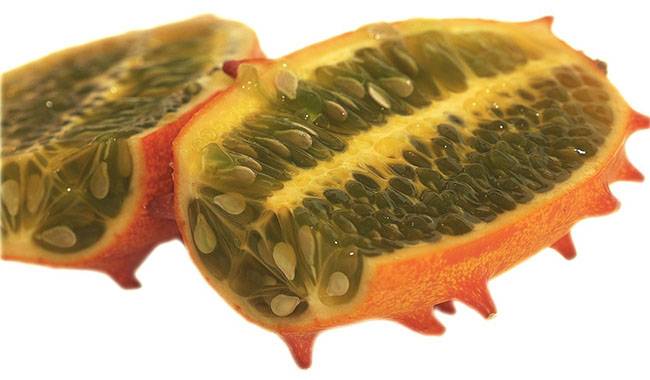
This exotic vegetable from the pumpkin family comes from Africa. But because it ripens fairly quickly, taking only 120 days (as long as a late-ripening tomato), it can be easily grown in the central region.
Horned melon is a vining plant, so it belongs near a fence or pergola. It’s a great addition to any garden, especially when the incredible-looking fruits start to ripen. You’ll want to pick them and taste them!
By the way, Horned melon has a very unusual flavor – a mix of cucumber, banana, lime, and avocado. Ripe Horned melon can be eaten raw – just cut the fruit in half and scoop out the contents with a spoon. Or mix Horned melon pulp with soft cheese for a tasty snack. Pickle the unripe fruit in the same way as cucumbers. They taste similar but seem to work very well.
By the way, Horned melon is very unpretentious and does not get sick.
Sow seedlings in individual pots 1 inch (2.5 cm) deep in late April or early May. Soak them in a bioregulator or sodium humate solution the day before sowing. Seedlings should be planted outdoors in late May or early June when the threat of spring frosts has passed. Planting pattern for planting on stands: 14-16 inches (35.5-40.5 cm) in a row with 16 inches (40.5 cm.) between rows.
Horned melon likes sun. It can be grown in any type of soil. It requires less soil than cucumbers but will produce more fruit if the soil is fertile. It is best to water twice a week and loosen the soil each time.
Horned melon needs fertilization: every 2 weeks, alternating between organic fertilizer (1:5 cowpea solution) and compound fertilizer (50 g per 10 liters of water).
2. Melothria scabra
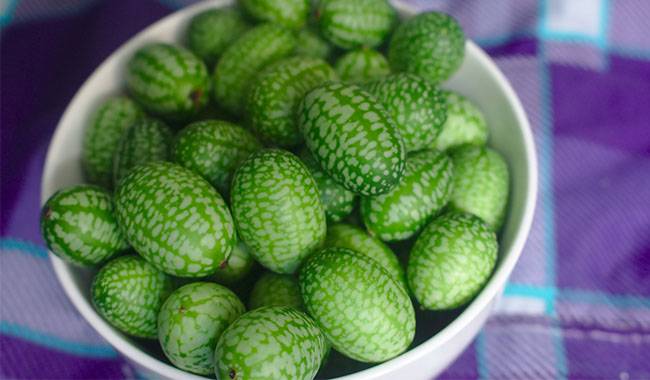
Melothria scabra or “mini watermelon” is another member of the pumpkin family. It is also a vine from Africa and is also very plain. Melothria scabra fruits are small, only 0.6-1 inches (1.5-2.5 cm) long. They taste like cucumbers and are ideal for pickling. They take only 75 days to mature, so you can grow this amazing plant even in areas with short summers.
Melothria scabra is perfect for decorating fences and walls – it grows quickly, branches gracefully, and completely weaves the entire stand.
Sow the seeds in a box in early April, on top of the soil, without covering. It is useful to cover the box with cling film so that the moisture inside stays high. At the stage of 3 leaves, the seedlings will be potted up. plant the sweet clover seedlings outdoors in mid-May. Leave 20 inches (50 cm) between plants when growing on a stand.
Melothria scabra needs a sunny spot. Care is exactly the same as for cucumbers.
3. Raphanus caudatus
The rat-tail radish, serpent radish, or tail-pod radishThe unusual thing about this amazing vegetable is that it is not a root, but a pod. They taste like regular carrots, but spicier, which gives them a special sour taste. Eat them while they are young – if harvested too late, they can become rough and very spicy.
Raphanus caudatus itself is also unusual for carrots – they are powerful shrubs, over 80 inches (2 meters) tall and about 40 inches (1 meter) in diameter. Without support, they tend to lean to one side, so they need to be tied down.
The first crop of pods will be produced 2 months after sowing. If the seeds are sown at the end of April – the crop is freeze-resistant to 21 °F (-6°C) – the first Raphanus caudatus salads can be tasted at the end of June or the beginning of June and the pods can be cured for the winter.
In addition to the pods, above-ground Raphanus caudatus has edible leaves and flowers that can be used to garnish salads. This strange vegetable also produces edible root vegetables that can be quite large, weighing up to 2.2 lbs (1 kg)!
Raphanus caudatus seeds are sown outdoors in late April at a depth of 0.4-0.6 inches (1-1.5 cm). Plants should be at least 40 inches (1 m) apart.
Raphanus caudatus prefers fertile, loose soil and plenty of light. It can be grown without fertilizer, but if watered with cowpea solution (1:10) every 2 weeks, the pods will be juicier and yield more. Even more pleasing is that this crop tolerates heat and drought easily.
4. Yellow Nutsedge (Cyperus esculentus)
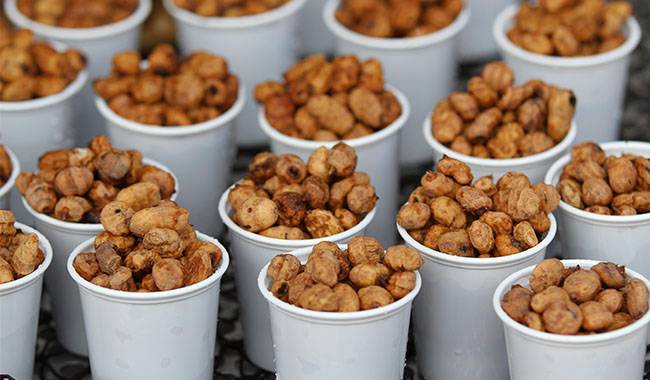
Chufa is often referred to as “almond meal”, but it is not related to nutsedge. – It is a member of the Salicaceae family and is known for its underground tubers. They have a nutty flavor, which is why it is compared to almonds.
It is probably the most unwanted vegetable alien. Even without human care, each ground almond plant can produce 50-60 tubers in bad weather. If the summer is favorable, it can produce up to 150.
Tubers should be planted directly in the soil in the second half of May at a depth of 2 inches (5 cm). Soak them in room-temperature water for 2 to 3 days before planting to help them germinate more quickly. Plant tofu as follows: 12 inches (30.5 cm) between rows and 8 inches (20.5 cm) per row. It is a good idea to water the Chufa in hot weather and it does not need any fertilizer.
5. Jícama (Pachyrhizus erosus)
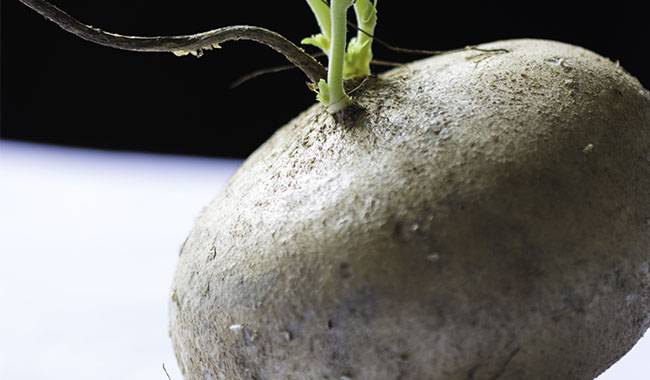
Jícama aka Pachyrhizus erosus, also known as Mexican yam bean, or Mexican turnip. from the outside, it is a common bean with the same leaves, flowers (usually lavender), and pods. And the pods are poisonous. Why are they useful, you may ask?
Because the most delicious part of it is underground! Jícama form tubers – somewhere between carrots and potatoes. Their skin is rough and unappetizing and needs to be peeled off. The flesh is very juicy, crunchy, and slightly sweet, with flavors of both carrots and apples. Fresh tubers are cut into thin strips or small squares, drizzled with lemon, and served in salads. You can cook the Jícama – it retains the same juiciness and crunch. It makes a great side dish!
Unlike potatoes, Jícama root vegetables are very low in calories, so you can safely eat them without worrying about your figure. jícama loves the sun, so choose the brightest spot to plant it.
Sow Jícama seeds in a clearing in early May (seedlings need to be covered with fleece until the threat of frost has passed). The sowing depth should be 1 inch (2.5 cm).
Frequent watering is necessary as long as the Jícama is young. Once a week, 1/2 bucket per bush is enough for mature plants.
As soon as the plant flower, they begin to form tubers underground. To make sure there are many, and larger ones, it is best to cut the flowers off.
One Jícama plant usually produces 4-5 root crops. They mature within 120 days after germination. They can be stored in the refrigerator or in the cellar. It is true that they do not last long, only a month or two. But they can be peeled, diced, or shredded, and frozen to be enjoyed throughout the winter.
Seeds from private collectors are usually packed in plastic zip-lock bags. Chalky seeds can be stored safely in them for years. Large grains (beans, peas, squash, zucchini) can suffocate in these packages, so the bags need to be opened from time to time to let air in.




